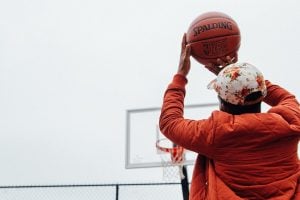 What is a rotator cuff? Is the cuff and ring the same? Can it be damaged, and if so – how? How to recognise a trauma – and most importantly – how to deal with it?
What is a rotator cuff? Is the cuff and ring the same? Can it be damaged, and if so – how? How to recognise a trauma – and most importantly – how to deal with it?
The rotator cuff, also called by some the ring, consists of four muscles: supraspinous, infraspinous, subscapular and minor oblong and covers the upper, anterior and posterior surfaces of the brachiorental shoulder. The main function that it fulfills is the stabilisation of the humeral head, rotational movements in the joint and raising the arm. Its damage is one of the most common damages to the shoulder joint – either as a result of injury or because of progressive degenerative changes. Most often it affects people practicing sports or those over 40 years of age.
We divide the main causes of damages into sudden and chronic.
- Sudden – associated with sports, e.g. falling on a straightened limb or lifting a weight with a rapid rotation of the arm;
- Chronic – in the course of degenerative changes, where calcification occurs against the background of the inflammatory process.
In the case of a chronic injury, the symptoms may initially not occur. On the contrary, it is in the acute course, where pain occurs suddenly and is the first sign that something is wrong. This type of injury most often occurs as a result of repetitive activities that require holding the arms up. In sports it is, for example: volleyball, swimming, basketball, handball or tennis. As far as the work is concerned, the most frequently exposed are, for example, people painting ceilings or working on a construction site.
The most common symptoms of damage to the rotator cuff are:
- Restriction of movement and pain;
- Pain that occurs during physical activity;
- Pain that occurs during a specific activity, e.g. when lifting the arm;
- Pain complaints also occurring at rest, sometimes impeding sleep;
- Appearing jump in the shoulder.
And how does the treatment look like? Sometimes surgery is necessary, where the surgeon sows the tendon at the site of detachment in an arthroscope manner. After this treatment, the limb is immobilised for a period of 4 to 6 weeks and the rehabilitation treatment begins.
Rehabilitation can be divided into conservative and postoperative. Conservative treatment is used when there are no indications for surgical treatment. It aims to reduce pain, improve the range of movement in the joint, strengthen muscles and improve movement biomechanics. The physiotherapist chooses the procedure individually for each patient, depending on their functional status. Post-operative management, in addition to the standard, also includes work on postoperative scars and their mobilisation.
If this unpleasant ailment touched you, do not wait and contact a specialist!

